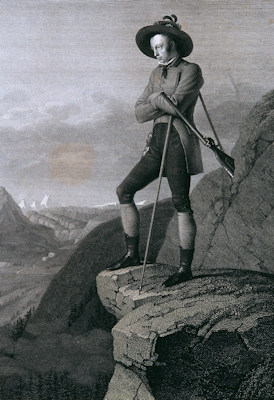
The alpine gardens adjoin Belvedere’s, but couldn’t be further away in terms of look and feel from the Baroque landscaped hedges, fountains, and terraces of Prince Eugene’s palace complex.
- Small, but fine, display of alpine flora
- Also includes a marvelous collection of bonsai trees
- Only opens in the warmer seasons
- See also:
The Alpengarten

(Bonsai trees in the Alpine Gardens)
Carefully-cultivated geometric shapes, paths and formal arrangements dominate the Belvedere palace gardens.
In contrast, the alpine gardens next door feature meandering pathways drifting around rocky outcrops thick with a tumble of plants, shrubs and small trees.
The gardens measure some 50m by 50m, so you won’t be spending half a day here. But they do offer a little respite from the Belvedere crowds: it’s just you, the Edelweiss, the chatter of birds, and the distant drone of Viennese traffic.
You can make a similar argument for the university botanical gardens next door, which cover a greater area (and charge no entrance fee). But the alpine gardens have one thing extra going for them: the bonsai.
Cultural trivia aside: the folk song, Edelweiss, from The Sound of Music is not actually an Austrian folk song. Rodgers and Hammerstein composed the piece for the 1965 musical.
The plants
The gardens offer a little bit more than just Edelweiss (I don’t recall if there was any there at all, actually): the facility actually includes over 4,000 plant and shrub species from alpine areas around the world and plays an important scientific and conservation role.
You’ll find everything marked with Latin and German names, but I didn’t spot any information in English on my visit (though it’s been a while).
The collection dates back to the early 1800s and the botanical interests of Archduke Johann. Schönbrunn originally housed the gardens, but everything moved to Belvedere in the second half of the 19th century.

(Archduke Johann on an alpine hunting trip; Blasius Höfel nach Johann Peter Krafft, Erzherzog Johann als Gemsenjäger, 1818, copper engraving, 50.5 x 35.5 cm, Belvedere, Wien, Inv.-Nr. 7619 © Belvedere, Wien. Reproduced with permission under the terms of Creative Commons License CC BY-SA 4.0.)
Botany must have run in the family. Johann’s brother was none other than Emperor Franz II/I, Holy Roman Emperor (until its dissolution) and the first Emperor of Austria.
When Franz wasn’t busy negotiating with Napoleon or pursuing a notably reactionary political agenda, he was out gardening. The botanical collection over at the Naturhistorisches Museum, for example, has its origins in the botanical court collection of the “Blumenkaiser” (Flower Emperor).
The most impressive plants (for the non-specialist) in the Alpengarten appear in the bonsai collection, partly behind glass and partly out in the open to your right as you enter the gardens.
Having said that, if you take the path along the left after the entrance you come across what looks like a moss-covered rock. This is actually a remarkable cultivar of white spruce.
And, near the back, cages crawl with houseleeks (which have nothing to do with leeks, but are pretty, rosette-shaped succulents).
There’s something strangely captivating about the bonsai trees, though, and the gardens display rather a lot of them here.
Maples and pines dominate the couple of dozen outside, with the glasshoused bonsai covering a broader mix of species that includes juniper, spruce, chestnut, elm, beech, larch, birch, pear, and apple. Their accompanying labels look a little old, so the age of each tree is likely more than stated.
The outdoor bonsai provide, perhaps, the best examples of this Japanese art form, Discover, for example:
- A beautiful 60 year-old purple Japanese maple and 100 year-old trident maple
- Gorgeous miniature pines, including a 180 year-old Japanese white pine
- A perfectly-formed 90 year-old cedar of Lebanon
Tickets & visitor tips
The federal parks and gardens department manage the alpine gardens. Belvedere tickets and passes don’t apply here; you pay a small fee to go in (€4.50 for an adult last time I checked).
Unlike Belvedere, the gardens usually only open from the middle of March to sometime in late summer or early autumn. During that time they may also have a handful of plants for sale.
Go in spring and early summer to catch the best period for flowers, of course.
How to get to the alpine gardens
Just follow the directions for Upper Belvedere. To enter the gardens, go to the southern gates of the complex and walk east for a few metres: you can’t miss them.
Address: Close to Landstraßer Gürtel 3, 1030 Vienna | Website